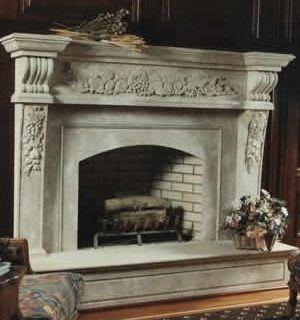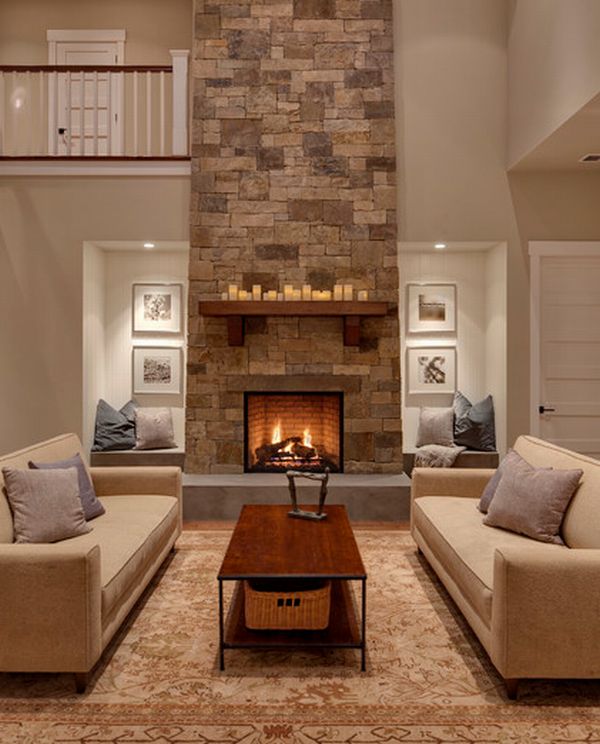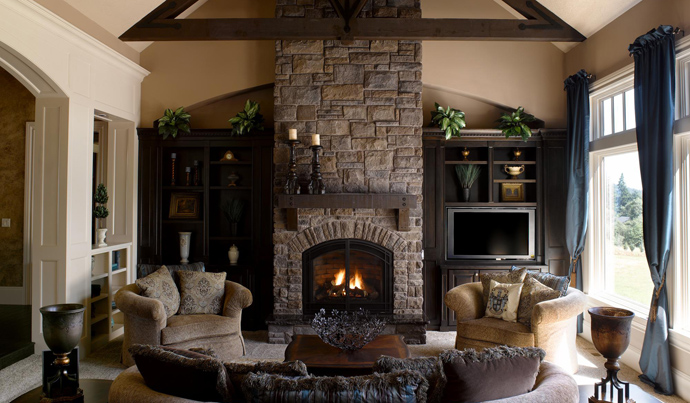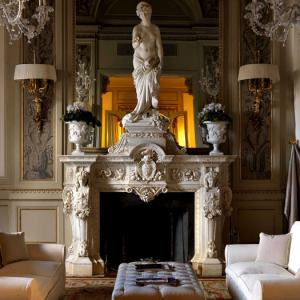Classic stone fireplaces have graced homes for centuries, offering enduring beauty and reliable warmth. These architectural focal points showcase natural materials like fieldstone, limestone, or marble, each bringing unique texture and color variations. Unlike modern prefabricated units, traditional stone fireplaces are built piece by piece, with masons carefully selecting and positioning each stone for structural integrity and visual appeal. The substantial masonry construction provides excellent heat retention, radiating warmth long after the flames subside. From rustic cottage styles with rough-hewn stones to elegant formal designs with precisely cut ashlar, these fireplaces adapt to various architectural traditions. Their timeless quality ensures they never go out of style, while modern innovations in venting and combustion improve their efficiency and safety. A well-crafted stone fireplace becomes more than a heat source—it’s a generations-old gathering place that adds value and character to any home.
Traditional Stone Materials and Their Characteristics
Fieldstone fireplaces embody rustic charm, using uncut stones collected from local fields or riverbeds. These irregular shapes create organic, freeform patterns that feel connected to the landscape. Limestone offers a softer appearance with its muted earth tones and ability to be carved for decorative detailing. Sandstone provides warm hues ranging from honey gold to deep rust, with natural layers that add visual interest. Each stone type has distinct maintenance needs—porous varieties may require sealing, while denser stones resist staining naturally.
Marble fireplaces represent formal elegance, with luxurious veining and polished surfaces. Soapstone delivers superior heat retention with its smooth, dark gray finish that develops a patina over time. Granite offers extreme durability and speckled patterns that hide wear. Slate’s cleft surface provides texture while its layered composition allows for thin, lightweight installations. The choice of stone impacts not just aesthetics but also the fireplace’s heat radiation properties and long-term durability.
Local stone varieties often make the most harmonious choices, blending with regional architecture and landscapes. Transportation costs decrease when using nearby quarries, and the stones naturally withstand local climate conditions. Some homeowners mix stone types—using rugged fieldstone for the exterior and smooth marble for the hearth. The material selection should consider both practical performance and desired style.
Design Styles Through History
Early American stone fireplaces were massive central hearths designed for both heating and cooking. Colonial versions became more refined with symmetrical designs and carved mantels. European influences brought ornate Baroque and Rococo styles with intricate stone carvings and curved lines. Each architectural period developed distinctive fireplace treatments that reflected available tools and cultural preferences.
Arts and Crafts movement fireplaces emphasized natural stone shapes with handcrafted details. Tudor revivals featured large stone hearths with arched openings. French country designs incorporated rough limestone with carved floral motifs. Georgian styles preferred precisely cut stone with classical proportions. The design choices extended beyond aesthetics—wider hearths allowed for bench seating, while taller openings improved heat circulation.
Modern interpretations of classic stone fireplaces often simplify historic details while maintaining traditional proportions. Some blend old-world craftsmanship with contemporary clean lines. The surround’s depth, opening shape, and mantel design all contribute to the overall style. Authentic recreations require research into period-appropriate stonework techniques and patterns.

Construction Techniques and Masonry Skills
Traditional dry-stack stone fireplaces use no mortar, relying on careful stone selection and placement for stability. Mortared constructions allow more design flexibility but require skilled craftsmanship. The firebox demands special attention—firebrick lining protects the stone from extreme heat while refractory mortar withstands temperature fluctuations. Proper footing and foundation prevent settling in the heavy structure.
Corbeling techniques create the classic tapered chimney effect by progressively stepping stones inward. Stone masons use various tooling methods—from rough pitching to fine dressing—to achieve desired surface textures. Through-stones that penetrate the entire wall thickness add structural strength. The construction process often begins with a detailed drawing or template to guide the complex stone arrangement.
Modern code requirements influence traditional construction methods. Steel lintels now support masonry over openings where stone arches once sufficed. Insulated flue liners improve draft and safety in chimney stacks. Expansion joints accommodate temperature-related movement. While power tools speed some processes, the art of stone matching and placement remains a time-honored manual skill.
Functional Considerations and Heating Efficiency
The massive thermal mass of stone fireplaces absorbs and slowly releases heat, providing lasting warmth. Rumford designs with tall, shallow fireboxes improve heat radiation into rooms. Some traditional styles include bake ovens or warming niches that utilize excess heat. The chimney’s height and interior proportions significantly impact drafting efficiency and smoke control.
Modern retrofits can enhance older stone fireplaces. Insert installations maintain the classic look while adding glass doors and improved combustion systems. Flue dampers help regulate air flow when the fireplace isn’t in use. Hearth extensions and spark guards update safety without compromising aesthetics. Proper ash dump systems simplify cleaning in frequently used fireplaces.
Seasonal maintenance preserves functionality. Annual chimney inspections prevent creosote buildup. Repointing deteriorated mortar joints maintains structural integrity. Stone surfaces may need occasional cleaning to remove soot stains. The fireplace’s heating performance depends on regular care and understanding traditional operation methods.
Decorative Elements and Mantel Designs
Carved stone mantels showcase craftsmanship with floral motifs, geometric patterns, or family crests. Some designs incorporate symbolic elements like grapes for abundance or oak leaves for strength. Overmantels extend the stonework upward with decorative panels or shelves for display. The mantel’s proportions should relate harmoniously to both the fireplace and room size.
Accent stones add visual interest—keystones above the opening, contrasting quoins at corners, or unusual mineral specimens as focal points. Some fireplaces feature carved dates or masons’ marks that add historical character. Repeating patterns in the stone coursing create rhythm and movement around the opening. The hearth stone often differs from the surround, providing visual grounding.
Contemporary adaptations might simplify ornamentation while preserving classic materials. Mixing stone with other natural elements like wood beams or iron hardware creates layered textures. The decorative approach should complement the home’s overall style—whether understated or elaborate.
Restoration and Preservation Methods
Historic stone fireplace restoration begins with careful documentation of original details. Gentle cleaning methods like poultices or low-pressure washing preserve aged surfaces. Matching replacement stones requires finding similar geological sources or carefully altering new stones to blend. Repointing uses lime-based mortars that mimic historic formulations in color and performance.
Structural stabilization may involve hidden steel supports or foundation repairs. Smoke chambers often need parging to restore proper drafting angles. Damaged carvings can sometimes be repaired with stone epoxy before careful reshaping. Protective coatings help vulnerable stones resist weathering while allowing breathability.
Ongoing preservation includes monitoring for moisture issues, vegetation growth in masonry, or salt crystallization damage. Professional conservators use minimally invasive techniques to maintain authenticity. The goal is to preserve both the fireplace’s physical integrity and its historical narrative for future generations. Proper restoration honors the original craftsmanship while ensuring safe,e continued use.
Stone Fireplace Designs From Classic to Contemporary Spaces
Amazing Stone Fireplace Designs
Stone Fireplace Designs From Classic to Contemporary Spaces
Chelsea Classic Series Stone Fireplace Mantel Stone fireplace
Living Room, Rustic Classic Stone Fire Place Decorations Ideas
Old World Stoneworks Beautiful Cast Stone Fireplaces u0026 Range Hoods
The Stone Fireplace Surround . . . A Timeless and Elegant Classic!
Dover Classic Series Stone Fireplace Mantel
Stone fireplace ideas for classic cozy style
Related Posts:











